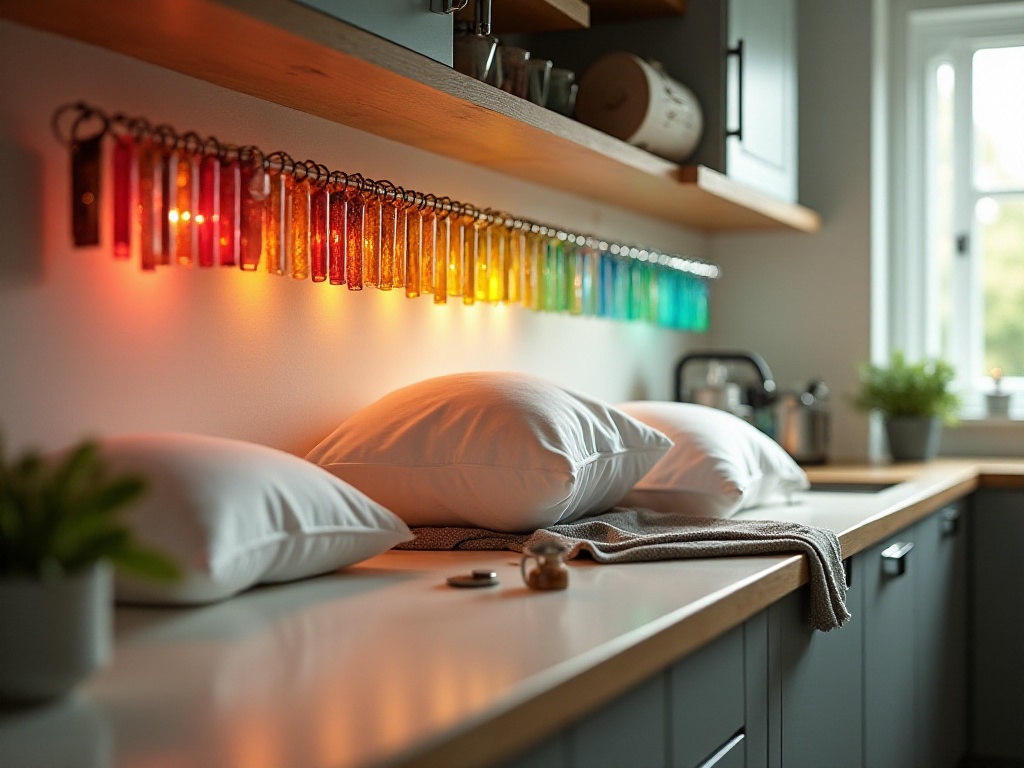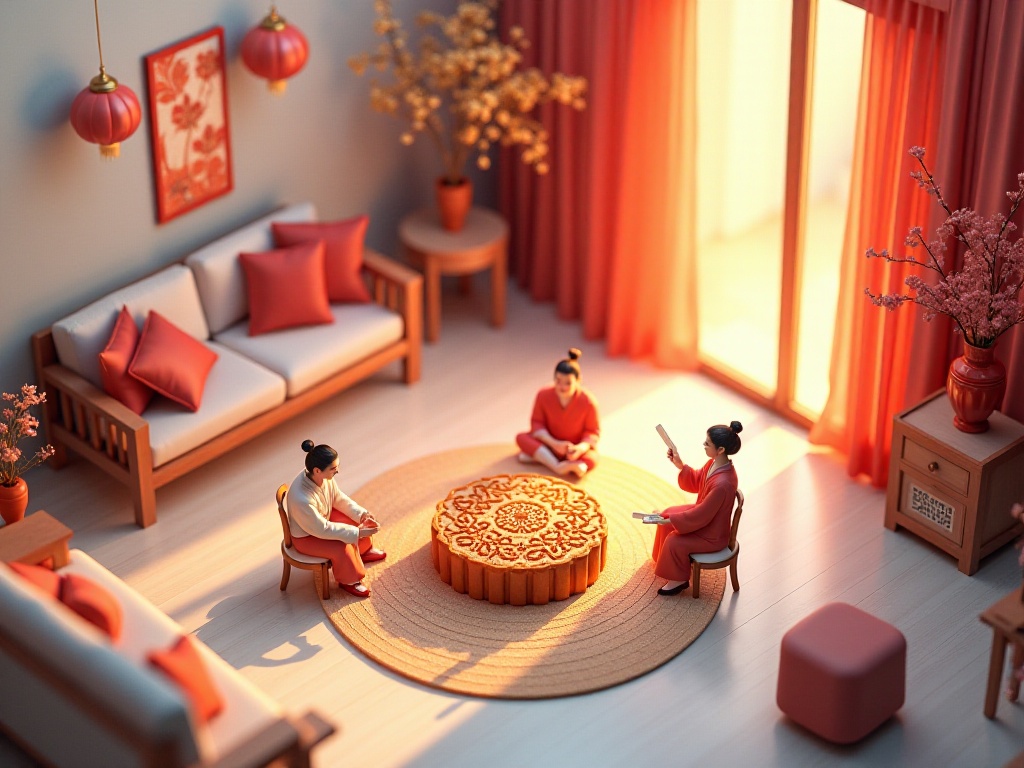Introduction
Having recently moved into a new apartment, I deeply relate to this! As a fresh graduate and working professional, I rent a 400-square-foot space, but I have quite a lot of stuff. Coming home every day was frustrating - spending ages searching through my bag for keys, clothes thrown everywhere, condiment bottles toppling over in the kitchen... it was driving me crazy!
After months of exploration and trial, I finally discovered some really effective organization methods. I'll be honest - it took me quite a while to figure out these practical tips. Plus, all these methods are super affordable and won't burden us salary workers with extra costs. Today I'm going to share these tips with you, guaranteed to transform your little nest!
Key Management
Truth be told, I used to be late quite often because I couldn't find my keys. Once I almost missed an important client meeting - talk about embarrassing! Later, I discovered a super useful trick - marking keys with nail polish.
I currently have 5 keys: red nail polish for the front door, blue for the storage room, yellow for the mailbox, pink for the bike lock, and green for the spare key to my parents' house. With this color coding, I can identify them at a glance, even in dim light. The nail polish color lasts much longer than stickers that easily wear off.
To perfect this system, I installed a simple key hook by the entrance, and the first thing I do when I get home is hang up my keys. This helps build good habits and prevents randomly misplacing them. I recently added a small mirror next to the key hook, so I can check my appearance while also remembering to check for my keys before leaving.

Bedding Storage
Bedding storage was truly one of my major pain points. My bedding storage used to be a complete mess, and I had to turn the whole cabinet upside down whenever I wanted to change the sheets. Then one day, I had a sudden inspiration: why not use pillowcases to store complete bedding sets?
Now I fold up matching sheets, duvet covers, and the other pillowcase and store them all in one pillowcase. I have three bedding sets - pure white, floral pink, and gray striped. Each set is stored in its corresponding pillowcase, neatly arranged in a dedicated area of my wardrobe. This way, when changing bedding, I just pull out one pillowcase and everything inside is a complete set - no more worrying about finding matching duvet covers.
To make the storage even more perfect, I label each packed pillowcase with specific contents, like "Summer Cool Bedding Set" or "Winter Warm Flannel 4-Piece Set." This makes seasonal changes super convenient. I recently discovered another tip: spraying a bit of fragrance before storing bedding, so there's a subtle scent every time I change the sheets, which feels especially nice.
Kitchen Revolution
As someone who cooks often, I understand the importance of kitchen organization. When I first started living alone, my kitchen was a disaster zone, with condiment bottles everywhere and cookware in chaos. Eventually, I was determined to organize properly, and after continuous exploration, I finally found an effective system.
First is condiment storage. I bought a set of uniform glass jars with airtight lids and transferred all condiments into them for storage. Each jar is labeled with contents and purchase date. The jars are arranged by frequency of use: most-used items like salt, sugar, and soy sauce on the easily accessible middle shelf; less frequently used spices and seasonings on the top shelf; and backup condiments on the bottom shelf.
To improve kitchen organization further, I installed a wall-mounted chopstick holder next to the sink, so washed chopsticks can drain directly. Next to the spice rack, I hung a small blackboard to note down condiments running low, so I won't forget to replenish them while grocery shopping.
Cookware storage is also particular. I bought a rack for storing pot lids vertically, which saves space and makes them easy to access. Frying pans and woks are stacked with soft cloth between them to prevent scratches. As for special cookware like steamers and stock pots, I keep those in higher cabinets to take out when needed.
Utensil Organization
Utensil organization seems simple but isn't easy to do well. I don't have many utensils, but there are various types: daily chopsticks, soup spoons, western cutlery, and dining sets for guests. Initially, these were just stuffed in drawers, and I often had to rummage through everything to find what I needed.
Now I use a super practical method: recycling paper towel rolls as chopstick holders. I use three rolls with labels: one for everyday chopsticks, one for guest use, and one specifically for stainless steel chopsticks. These rolls are secured in the drawer with tape, so I can see all chopsticks at a glance when opening the drawer.
To perfect utensil organization, I installed dividers in the drawer to separate different types of utensils. Soup spoons and spatulas in one section, knives and forks in another, making everything easy to find. I've discovered that this categorized storage not only keeps things neat but also extends the life of utensils by preventing them from bumping against each other.
It's particularly important to note that utensils should be completely dry before storage to prevent mold and rust. I've developed a good habit of using a dedicated cloth to dry utensils before putting them back in their places. It takes a little extra time but saves a lot of trouble later.

Closet Organization
Closet organization is definitely one of the most headache-inducing problems! When I first moved into my new home, I just roughly folded clothes and stuffed them in, resulting in a mess every time I needed to find something. Later, after watching many organization expert videos, I discovered there's so much to learn about clothing storage.
The vertical folding method has been a life-changing discovery. Unlike traditional flat stacking, vertical folding allows clothes to be stored like books standing upright. This not only saves space but, most importantly, prevents other clothes from getting messy when taking items out. Now in my closet, T-shirts, sweaters, and jeans are all stored this way.
To make clothing storage more organized, I've also done detailed categorization by season and occasion. Work clothes, casual wear, and sportswear are placed in different areas. Each area is separated by dividers and labeled. This way, even when rushing out in the morning, I can quickly find the clothes I want.
The deep space in the closet has also been fully utilized. I bought several vacuum storage bags for seasonal clothing. This not only saves a lot of space but also protects clothes from moisture and moths. Recently, I also added some sachets in the closet, so there's a subtle fragrance every time I open it, which really improves my mood.
Hanging clothes also requires technique. I hang frequently worn coats and shirts in the hanging section, arranged by color depth, which looks particularly pleasing. To prevent hangers from sliding around in the closet, I wrapped anti-slip tape around them, so clothes stay firmly in place.
Bathroom Organization
The bathroom can easily become the most cluttered space, given all the bottles and containers that need to be stored. My bathroom isn't large, but through proper planning, it's now well-organized.
First is making good use of wall space. I installed three hook-type storage baskets on the bathroom wall for different types of items. The top basket holds backup toiletries, the middle one holds daily-use items like shower gel and shampoo, and the bottom one is specifically for cleaning supplies. This categorization makes items easy to access while keeping the bathroom tidy.
To help bath products drain better, I lined the bottom of the storage baskets with cuttable non-slip mats. This not only prevents bottles from sliding but also allows water to drain quickly, avoiding mold at the bottom of bottles. I also added waterproof labels to each storage basket to prevent mixing up items.
Towel storage is also crucial. I installed a multi-layer towel rack behind the bathroom door that can hang several towels simultaneously. Used towels are hung up immediately to dry, which is not only hygienic but also extends their lifespan. To distinguish different people's towels, I bought towel rings in different colors.
Stationery Management
As someone who often works from home, stationery organization is essential. Previously, my desk was always cluttered with various pens, notebooks, and sticky notes. Later, I discovered a particularly cost-effective and practical method: using shoeboxes for stationery storage.
I found several similarly sized shoeboxes and made dividers from cardboard, creating compartments of different sizes. Large compartments hold notebooks and folders, while small ones categorize various pens and sticky notes. Each compartment is labeled with its contents, making everything very convenient to use.
To keep the desktop tidy, I also made a simple desktop organizer. By cutting and gluing together several empty milk cartons and covering them with nice kraft paper, I created a multi-functional stationery organizer. The most frequently used items go in this organizer, within easy reach.

Small Items Organization
Life always involves many small items that need organizing, like hair ties, brooches, buttons, etc. These things may be small, but they can look very messy if not stored properly. My solution is to use ice cube trays to store these small items.
Each compartment of the ice cube tray is just the right size for these small things, and the transparent material lets me see what's inside at a glance. I use different compartments for different categories: one for hair ties, one for pins, one for buttons... making it very convenient to find things.
To perfect the organization, I also attached a chart to the ice cube tray lid, noting what's stored in each compartment. This way, even if a compartment is empty, I can see what needs to be replenished. Recently, I came up with a new idea of using clear tape to secure small items that are often used together in one compartment to prevent them from scattering.
Experience Summary
Through this period of practice, I've found that good organization habits really can improve quality of life significantly. Coming home to a tidy space makes me feel so much better every day. I've summarized three important organization principles:
First is making the most of everything. Many seemingly ordinary items can become organization tools, like shoeboxes, paper towel rolls, and ice cube trays. Just think creatively, and you can find organization helpers everywhere.
Second is categorization. Even the smallest space can store many things if properly categorized. Plus, categorized storage is not only neat but also makes finding things particularly convenient.
Third is regular maintenance. Even the best organization system needs maintenance, and I've developed a habit of organizing once every weekend. This is also a good time to clear out unnecessary items, keeping the home consistently tidy.

Interactive Sharing
After sharing so many of my organization insights, I wonder if you have any unique organization tricks? Or have you encountered any problems while implementing these methods? Actually, everyone's living habits are different, so organization methods will vary too. Through exchange and sharing, we can learn from each other and find the most suitable organization methods for ourselves.
For example, I recently learned a new trick from a friend: using adjustable hangers to store scarves, which not only prevents wrinkles but also saves drawer space. So you see, there are always new things to learn about organization.
Remember, creating an organized home isn't something that happens overnight, but requires consistent persistence. But once you master these techniques, I believe you can also keep your home well-organized. Let's work together to create a living space that brings joy to body and mind!


